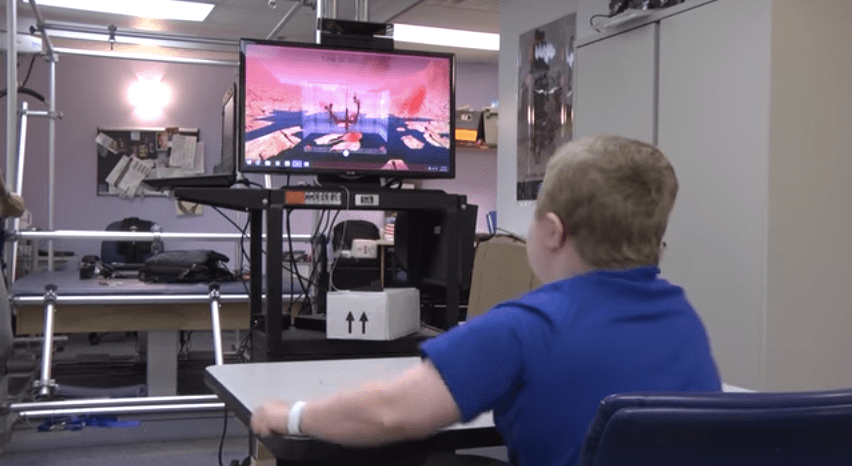Xbox Technology Is Helping Kids With Muscular Dystrophy Qualify for Clinical Trials

Some cool new research in progress at Nationwide Children’s Hospital may mean more clinical research trials to benefit those with Muscular Dystrophy, and we have Xbox technology (and some awesome researchers) to thank for it!
The video above from LiveScience explains how a video game is helping with inclusion criteria for clinical trials. According to the hospital’s press release:
Ability Captured Through Interactive Video Evaluation, or ACTIVE-seated technology, utilizes a Kinect gaming camera, found in Xbox consoles. With a patient-requested zombie theme, the game requires the boys to reach with their arms in various directions to push forward a force field. The Kinect camera and ACTIVE-seated software measures how far and how long the boys reach. Measuring change over time is a primary goal. The development of the game relied almost entirely on the patients.
This particular study hits home for me, as I was born with Muscular Dystrophy—specifically Spinal Muscular Atrophy—I’m a gamer, and I was also in a clinical trial for my specific disease. No, darn, I didn’t get to play video games during my drug trial, but I did have to qualify for it with the six minute walk test. At the time I had no idea it was an FDA rule, just that it was required and more difficult than I expected. I use a motorized scooter to get around when I’m out of the house but I can still walk. However, I never walk for any specific measure of time, and I quickly realized six minutes was a daunting task.
Sixty-one patients, recruited from the Nationwide Children’s Hospital Muscular Dystrophy Association Clinic, participated in the study. The reachable area, which was visually represented as a series of boxes that appeared on a screen, was converted into a scaled score based on arm length. This allowed for the standardization of comparisons between patients of different sizes and the accommodation of growth in patients. The placement of the boxes is based on the size of the patient.
The boy in the video has Duchenne Muscular Dystrophy (which affects mostly boys), one of over 40 neuromuscular diseases which fall under the umbrella of Muscular Dystrophy (also included: Lou Gehrig’s Disease, aka ALS, aka what all those people were doing the ice bucket challenge for). They all vary in degree from type to type and person to person, so it really is unfair to disqualify those who can’t walk for six minutes or at all.
In a recent study published online in Muscle and Nerve, researchers found that scores in the game were highly correlated with parent reports of daily activities, mobility and social and cognitive skills. Currently, patients with diseases like muscular dystrophy who have lost mobility and use wheelchairs are excluded from clinical trials because there is not an easy, affordable or comprehensive way to measure their muscular function. The standard measurement to demonstrate mobility is having the patient walk for a six minute test. The researchers hope the video game, designed with input from their patients, will demonstrate to the Food and Drug Administration that repeating the game with a patient accurately yields the same results, and results will change according to the progress of the patient.
For their part, researchers were “thrilled” with the results. Linda Lowes, clinical therapies research coordinator for the neuromuscular program at Nationwide Children’s, said, “It’s very reliable day to day because it’s just fun. The scores are related to function, and really reflect what the boys could do in their life.”
As most of us know, motivation of a game’s results are not only part of gaming as a whole, but something the researchers rely on to keep patients motivated during what is usually a very difficult and boring process.
“The game allows them to disintegrate aliens, which they love,” said Lindsay Alfano, a physical therapist at Nationwide Children’s. “In clinical trials, we need to see that they’re getting better with all of their activities. They have to spend hours with us doing nothing that’s easy, only hard things. Looking at their faces after they play this game where they get to just play and be kids is a lot of fun to see.”
Are you following The Mary Sue on Twitter, Facebook, Tumblr, Pinterest, & Google +?
Have a tip we should know? tips@themarysue.com